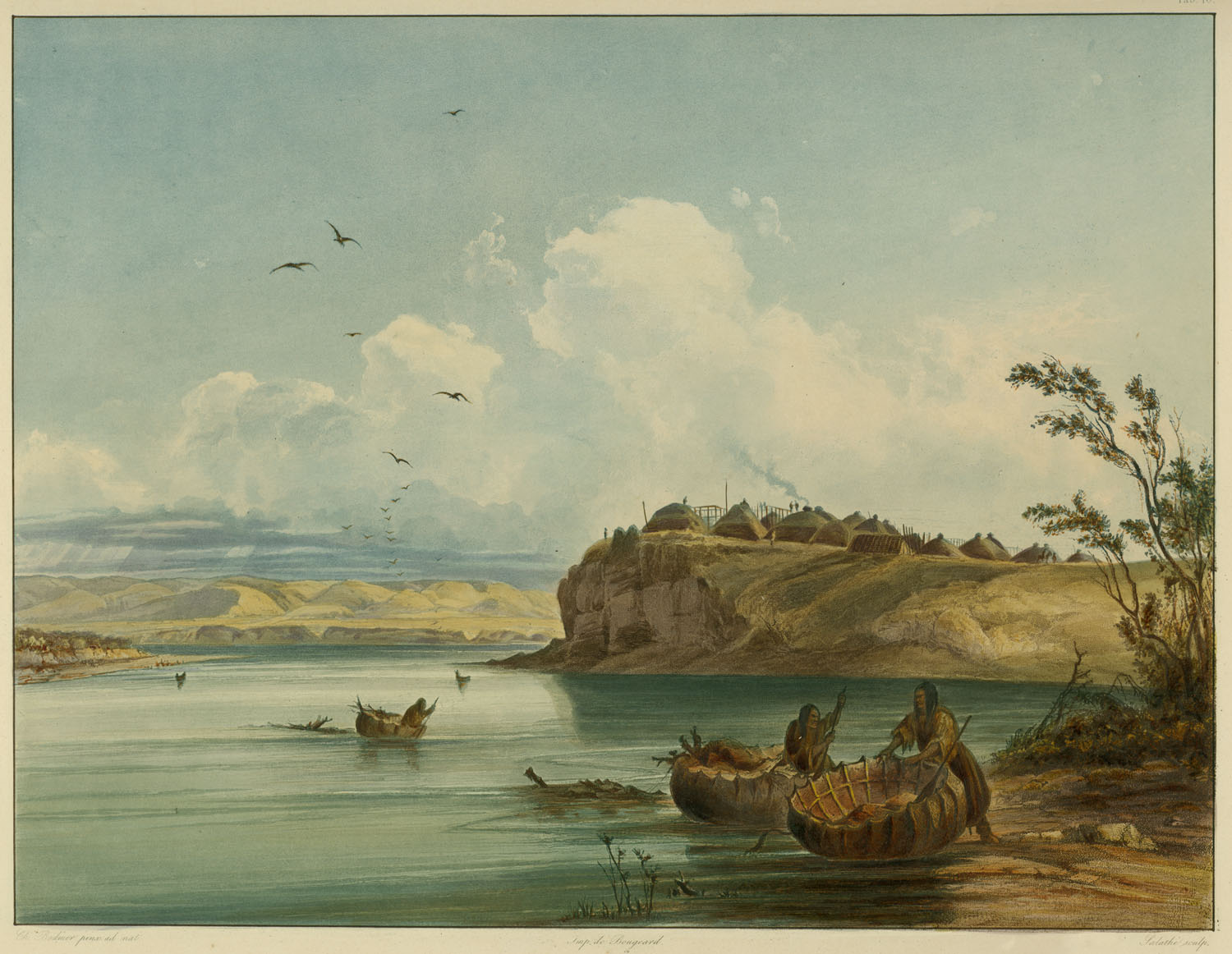National Traveling Exhibition at
Wichita State University Libraries
January 12 - February 22, 2008
The story of the Lewis and Clark expedition is well known to most Americans, especially because of the recent bicentennial celebrations, but the Native American perspective on their voyage is not as well known. It is important to understand that although this great journey essentially opened American eyes to the West and encouraged national expansion, it also contributed to a dramatic change in the well-established cultures of the Indian tribes already living in the region.
In 1800, the Native American communities along the path of Lewis and Clark were thriving. Hunting, fishing, farming, and commerce were the foundations for tribal prosperity. Indians provided vital assistance to the explorers--the Voyage of discovery most likely would not have been the success it was without their aid. But by 1900, Native Americans found it almost impossible to maintain their traditional lifeways. Mining, homesteading, ranching, and the fur trade had all undermined the centuries-old traditions of the Indian country. Smallpox decimated tribes and "Americanization" campaigns sought to suppress all aspects of traditional culture.
This exhibition tells the story of the Lewis and Clark expedition from a different point of view --that of the Indians who lived along their route. During their journey to the Pacific coast and back, Meriwether Lewis and William Clark and their small group of voyagers crossed the traditional homelands of more than 50 native American tribes. The exhibit examines this monumental encounter of cultures and examines the past and present effects of that encounter on the lives of the tribes which still live in the region.
The Exhibition
Wichita State University Libraries has been selected as one of
27 sites for this six-year national traveling exhibition. This national tour kicks off in
October 2007 and runs through April 2012. Wichita State University Libraries is the only site in Kansas selected to host this exhibit! Learn more about the exhibition
The exhibition is free and open to the public. For information about visiting the exhibition, locating the WSU Libraries, or arranging a group tour, please see the visit section.
Sponsors for this exhibit: Lewis & Clark and the Indian
Country: Two Hundred Years of American History was organized by the
Newberry Library, Chicago, in partnership with the American Library
Association. The traveling exhibition is supported by a grant from the
National Endowment for the Humanities: great ideas brought to life.
Other major funding has come from the University of Illinois at
Urbana-Champaign. The Sara Lee Foundation is the lead corporate sponsor;
Ruth C. Ruggles, the National Park Service, the Kansas Humanities Council,
and the Wichita State University Libraries provided additional support.
More about our sponsors.

